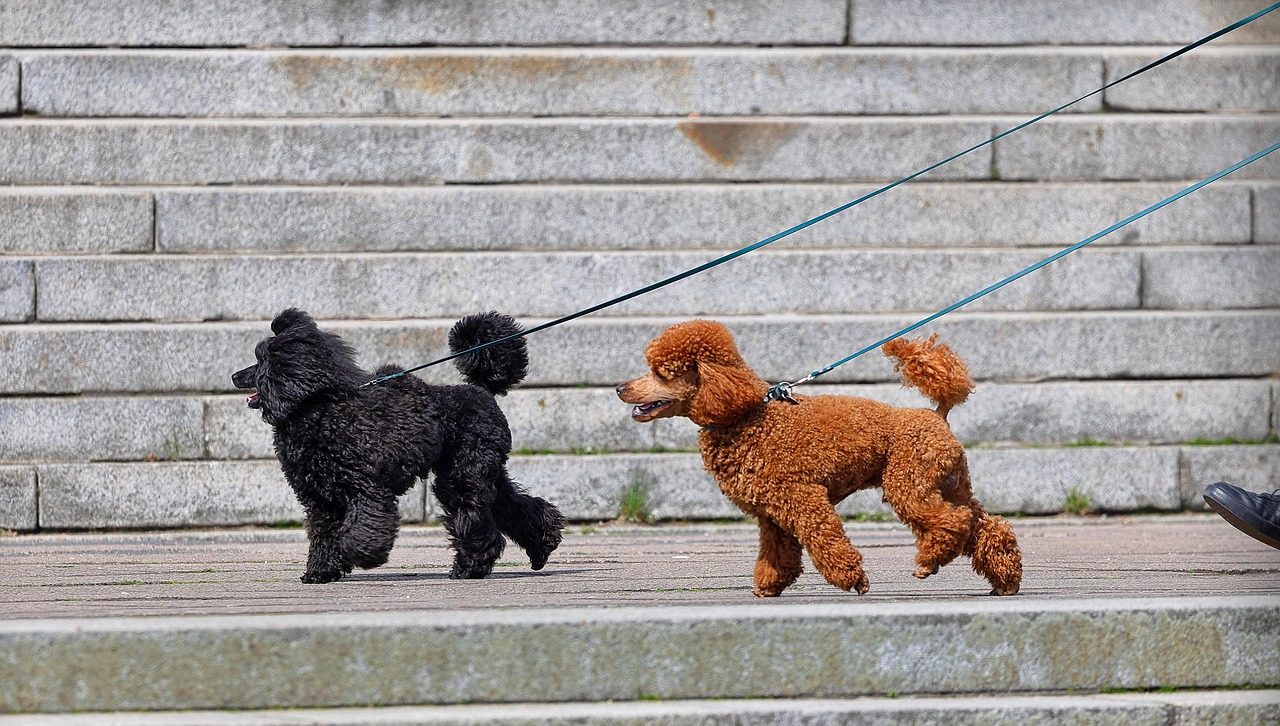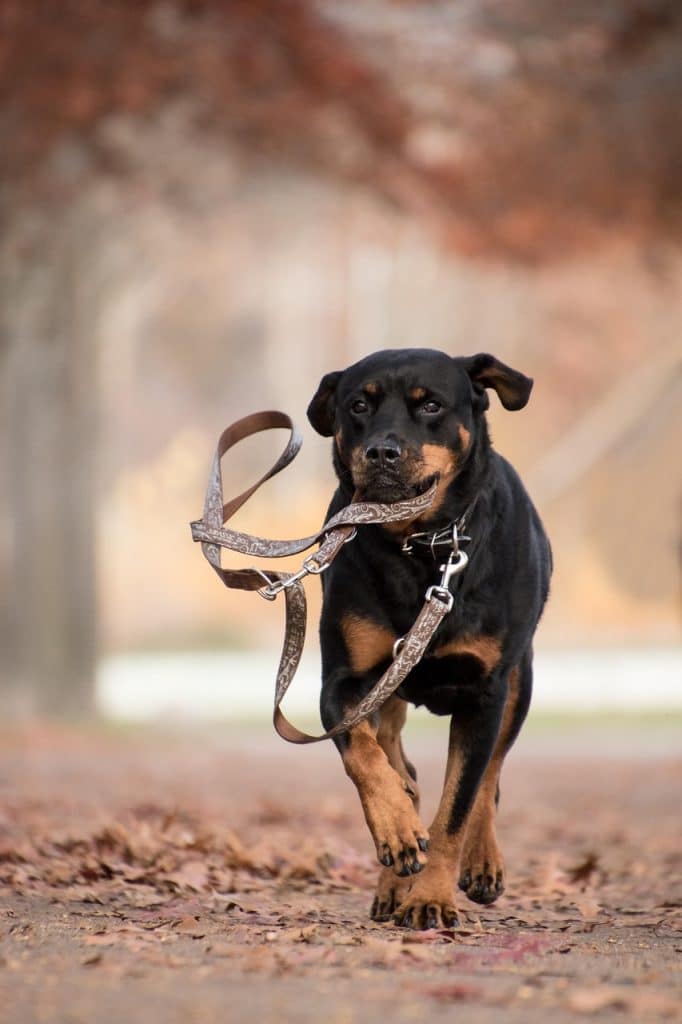Is Your Dog Walking You? Decode Leash Manners Now!
Ever feel like you're being dragged down the street by a furry, four-legged torpedo? You're not alone! Many dog owners experience the frustration of a dog who pulls, lunges, or generally behaves like they're in charge of the walk. This isn't just inconvenient; it can be dangerous for both you and your dog. Understanding and addressing these behaviors, a.k.a. dog walk behavior, is key to enjoyable and safe outings.
Imagine a serene walk with your canine companion, both of you enjoying the fresh air and scenery. No more strained arms, embarrassing tangles, or stressful encounters with other dogs. This is achievable with the right knowledge, tools, and training. Let's dive into the world of leash manners and transform your walks from a struggle into a joy!
Understanding Leash Reactivity
Before tackling specific behaviors, it's crucial to understand the underlying reasons behind them. Leash reactivity is a common issue, and it's often misunderstood.
What is leash reactivity in dogs?
Leash reactivity refers to a dog's exaggerated reactions—such as barking, lunging, growling, or pulling—when on a leash and encountering specific triggers. These triggers could be other dogs, people, cars, or even squirrels.
What are the common causes of leash reactivity?
Several factors can contribute to leash reactivity:
"Unlock the Secrets to a Blissful, Healthier Puppy: Discover the Benefits of Holistic Housebreaking"
- Frustration: The dog wants to greet or interact but is restricted by the leash.
- Fear: The dog feels threatened and reacts defensively.
- Anxiety: The dog is generally anxious and the leash exacerbates this feeling.
- Learned behavior: The dog has learned that reactive behavior gets them what they want (e.g., the other dog goes away).
How does leash reactivity differ from aggression?
While leash reactivity can sometimes involve aggressive displays, it's not always the same as aggression. Reactivity is often rooted in frustration or fear, whereas aggression is typically driven by a desire to harm. However, it's essential to address reactivity to prevent it from escalating into true aggression.
Identifying Problem Dog Walk Behavior
Identifying the specific problem behaviors is the first step to correcting them. Here are some common issues:
Excessive pulling: How much is too much?
If your dog is constantly pulling on the leash, to the point where you're being dragged along, it's excessive. A comfortable walk should involve a loose leash most of the time.
Lunging and barking at other dogs or people.
This is a clear sign of reactivity and can be very stressful for both you and your dog, and can also startle or frighten other walkers. This can also cause harm if your dog gets loose.
Constant sniffing and stopping.
While sniffing is a natural behavior for dogs, excessive sniffing and stopping can disrupt the flow of the walk and show a lack of focus.
Zigzagging and erratic movements.
If your dog is constantly darting from side to side, it makes for an unpredictable and tiring walk.
Ignoring commands while on the leash.
A dog who ignores commands on the leash isn't respecting your leadership and demonstrates a lack of training.
Essential Training Tools and Equipment Tips
The right equipment can make a significant difference in your training efforts.
Harness vs. Collar: Which is better for leash training?
Both have their pros and cons. Harnesses, particularly front-clip harnesses, can discourage pulling by redirecting the dog's movement. Collars are fine for dogs who don't pull, but can put strain on the neck if the dog pulls or lunges.
Leash length: What's the ideal length for training walks?
A standard 6-foot leash is generally recommended for training walks. This provides enough slack for the dog to move comfortably but also allows you to maintain control.
The role of positive reinforcement: Treats, toys, and praise.
Positive reinforcement is key to successful training. Reward your dog for good behavior with treats, toys, or verbal praise. Make the desired behavior rewarding!
Clicker training: How to use it effectively.
Clicker training can be a powerful tool. The clicker marks the exact moment your dog performs the desired behavior, followed by a reward. This creates a clear association and helps the dog learn quickly.
Practical Leash Training Techniques and Commands
Now, let's get into the practical training techniques.
The Leave It command: Reducing sniffing and distractions.
Teach your dog to Leave It when they are about to sniff something or get distracted by something they shouldn't. Start with low-value items and gradually increase the difficulty. The ‘Leave It’ command can also be used to train your dog that you possess the high value items or toys and that they understand that they need to listen to you.
Heel training: Encouraging a steady pace.
Heel training involves teaching your dog to walk calmly by your side. Use treats and praise to reward them for maintaining the correct position.
Changing direction: Redirecting focus effectively.
If your dog starts to pull or get distracted, change direction abruptly. This disrupts their focus and encourages them to pay attention to you. This is a great way to keep your dog engaged with the walk and with you.
Stopping and starting: Building anticipation and preventing pulling.
Incorporate frequent stops and starts into your walk. This teaches your dog to anticipate your movements and prevents them from pulling ahead, while also keeping them engaged.
Addressing Environmental Triggers During Walks
Dealing with triggers in the environment is a crucial part of leash training.
Desensitization and counter-conditioning strategies.
Desensitization involves gradually exposing your dog to the trigger at a low intensity, while counter-conditioning involves changing the dog's emotional response to the trigger by pairing it with something positive (e.g., treats).
Managing encounters with other dogs and people.
Keep a safe distance from other dogs and people. If a reaction seems imminent, distract your dog with a treat or toy. You can walk in a large open field to give your dog some space to explore and sniff, without others getting too close for comfort.
Navigating busy streets and intersections safely.
Use short leash and firm commands when navigating busy streets. Make sure your dog is focused on you and cross at a safe moment.

Creating positive associations with previously stressful stimuli.
If your dog is afraid of a particular object or noise, try to create positive associations by pairing it with treats or praise. If your dog tends to get stressed out around traffic, giving them treats while waiting to cross the road will ensure that they are comforted and engaged as the cars pass by.
Preventing Leash Reactivity
Prevention is always better than cure. Start early to prevent leash reactivity from developing.
Early socialization: Exposing puppies to various stimuli safely.
Expose puppies to a variety of sights, sounds, and people in a safe and controlled environment, for instance, puppy training class. This helps them become well-adjusted and less likely to react fearfully to new experiences later in life.
Continued training: Reinforcing good behavior consistently.
Continue to reinforce good leash manners throughout your dog's life. Regular training sessions will keep their skills sharp and prevent bad habits from forming.
Maintaining a calm and confident demeanor.
Dogs can sense your emotions. Stay calm and confident during walks, as this will help your dog feel more secure and less likely to react to triggers.
Troubleshooting Common Leash Walking Challenges
Even with the best training, challenges can arise. Here's how to handle them.
What to do if your dog suddenly becomes reactive.
If your dog suddenly becomes reactive, try to remove them from the situation as quickly as possible. Use a calm, reassuring voice and reward them for calming down.
How to handle setbacks in training.
Setbacks are normal. Don't get discouraged. Go back to basics and reinforce the fundamentals. Adjust your training plan if necessary.
When to seek professional help from a certified dog trainer or behaviorist.
If you're struggling to manage your dog's leash reactivity on your own, or if the behavior is severe, seek professional help from a certified dog trainer or behaviorist. They can provide personalized guidance and support.
The Importance of Consistency and Patience
Consistency and patience are key to success in leash training.
Establishing a routine for walks.
Establish a consistent routine for walks. This helps your dog know what to expect and can reduce anxiety. A consistent schedule can help calm your dog down on their walks, making everyone more relaxed.
Setting realistic expectations for progress.
Don't expect overnight miracles. Leash training takes time and effort. Set realistic expectations for progress and celebrate small victories along the way.
Celebrating small victories along the way.
Acknowledge and celebrate every small step forward. This will keep you and your dog motivated and engaged in the training process.
Advanced Leash Walking Skills
Once your dog has mastered the basics, you can start working on more advanced skills.
Off-leash training (when and where it's appropriate).
Off-leash training can be a great way to give your dog more freedom, but it's essential to do it safely and responsibly. Start in a secure, enclosed area and only progress to public areas when your dog is reliably responsive to commands.
Walking in crowded areas.
Walking in crowded areas requires a high level of focus and control. Practice in less crowded areas first and gradually increase the difficulty as your dog improves.
Combining leash manners with other training skills.
Integrate leash manners into other training exercises, such as sit-stays and recalls. This helps reinforce the concepts and makes them more applicable to real-world situations.
Maintaining a Positive Relationship with Your Dog During Training
Training should be a positive experience for both you and your dog.
Using positive reinforcement over punishment.
Focus on rewarding good behavior rather than punishing bad behavior. Positive reinforcement is more effective and helps maintain a strong bond with your dog.
Recognizing signs of stress in your dog.
Be aware of the signs of stress in your dog, such as yawning, lip-licking, or whale eye (showing the whites of their eyes). If you notice these signs, take a break and reassess your approach.
Adjusting your approach as needed.
Every dog is different. Be prepared to adjust your training approach based on your dog's individual needs and personality. What works for one dog may not work for another.
Also don't forget to invest in some LED lights dog leash so your fur baby can be seen at night! Be safe and stylish.
Decoding your dog's walk behavior and implementing these techniques will help you transform stressful walks into enjoyable experiences. Remember to be patient, consistent, and positive, and you'll be well on your way to a harmonious partnership with your canine companion. Check out these relevant articles too: [Is Your Old Dog Set in Their Ways? Proven Tips for Teaching New Tricks!,Is Your Pup Ready? Decoding the Ideal Dog Leash Training Age]

